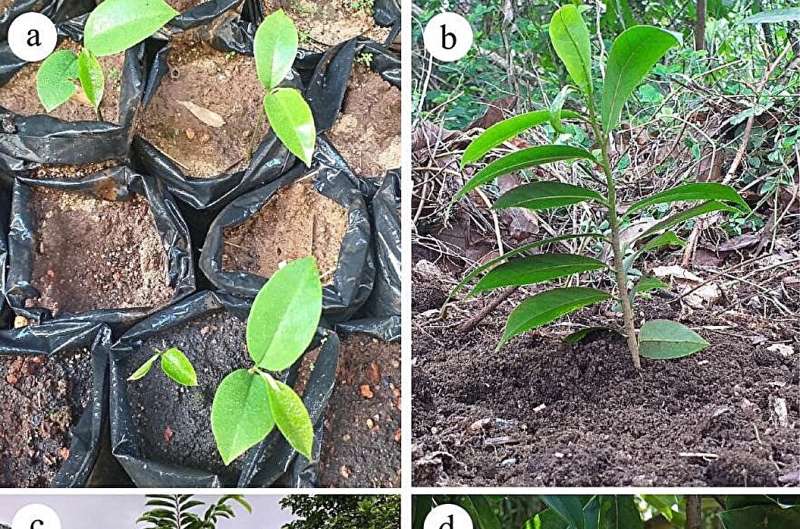This article has been reviewed according to Science X's editorial process and policies. Editors have highlighted the following attributes while ensuring the content's credibility:
fact-checked
proofread
Research team uncovers optimal conditions for soursop cultivation

A research team has identified the optimal edaphic and climatic conditions for the growth of soursop (Annona muricata L.), a plant with significant medicinal potential and nutritional value. Their findings provide crucial baseline information for improving soil management to enhance soursop production, which can contribute to food security and agricultural diversification.
Achieving food security, improving nutrition, and stopping hunger are central to sustainable development goals. Despite rising global food prices and a growing population, about 800 million people remain chronically undernourished. Staple crops face increasing challenges due to climate change and soil fertility decline.
Underutilized crops like soursop (Annona muricata L.) have the potential to enhance food security, especially for resource-poor populations. However, modern agriculture threatens the genetic diversity of these crops.
A study published in Tropical Plants aims to identify optimal climatic and soil conditions for soursop cultivation to modernize and intensify its production, improving food security and environmental conservation.
In this study, researchers review the multifaceted uses of A. muricata, emphasizing its potential in the food processing industry due to its rich nutrient content. The seeds are noted for their high oil content, suitable for oil production. The pulp is packed with essential vitamins, amino acids, minerals, and other bioactive compounds, making it valuable for producing various food products such as juices, ice creams, and candies.
Medicinally, A. muricata exhibits a wide range of therapeutic properties, including antidiabetic, anticancer, antioxidant, anti-inflammatory, antibacterial, insecticidal, and antiviral effects. These extensive medicinal benefits have been well-documented in numerous studies. Additionally, the plant serves ecological roles in agroforestry systems as a shade tree and windbreak.
Interestingly, A. muricata also possesses notable photocatalytic properties, offering an environmentally friendly alternative to conventional zinc oxide nanoparticles.
This review highlights that optimal cultivation of soursop requires specific climatic and soil conditions, including warm, humid tropical climates (21°C–26°C), well-drained soils with a slightly acidic, and sufficient organic matter (> 6%).
While soursop can tolerate a range of soil types, its best growth is observed in deep, well-aerated soils with proper moisture regimes (annual rainfall of 1,000 to 2,500 mm).
In addition, this study proposes recommended soil requirements for cultivating A. muricata. These diverse nutritional, medicinal, and ecological benefits are driving increased interest in the cultivation and commercial exploitation of soursop.
The study's lead researcher, Georges K. Kome, says, "Further studies should be conducted to assess the influence of other important characteristics such as topography (slope), cation exchange capacity, nutrient ratios, and soil salinity."
In summary, A. muricata is gaining recognition for its medicinal potential and high nutritional value, suitable for tropical environments. Future research should focus on field trials, soil nutrient requirements, and developing climate-adapted varieties to enhance its agricultural resilience and productivity.
More information: Georges K. Kome et al, Baseline edaphic requirements of soursop (Annona muricata L.), Tropical Plants (2024). DOI: 10.48130/tp-0024-0023
Provided by TranSpread




















